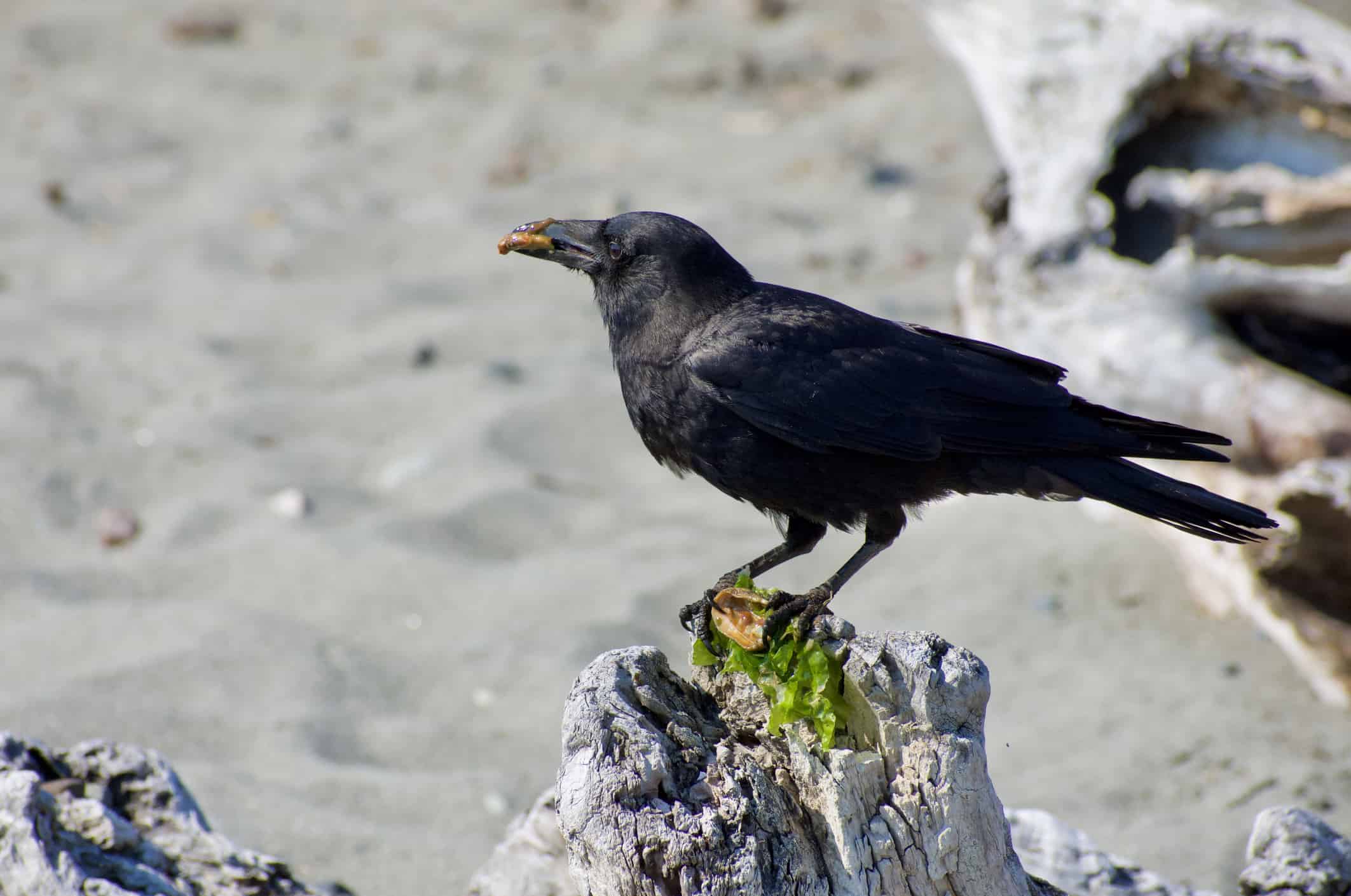During the warmer months, crows typically live in smaller family groups of anywhere from two to twelve individuals. Usually, this smaller group contains the parents, that year’s chicks, and occasionally, a few chicks from the year before that have yet to split off from their parents.
However, in the cooler months, crows roost communally. Before heading to their final sleeping spot, crows will gather in several smaller groups that eventually get bigger and bigger. To gather everyone together, these groups can be quite noisy.
These communal groups can contain hundreds or thousands of birds. Often the travel pattern of birds will be quite predictable as they gather to roost each day. You’ll see them fly in the same pattern.
The huge group will slowly break into smaller groups when morning comes, as the birds return to their homes.
There are many reasons crows gather together in these large flocks, including:
1. Safety
The primary reason crows roost together in the winter is for safety. Their main predator is owls, and they are typically more exposed in the winter when the branches are bare. When crows gather together, they’re able to deter predators.
Crows cannot see in the dark, while owls can. However, some roosts are tactically placed near streetlights, where owls no longer have the advantage.
As an owl, going after one or two crows that cannot see you is one thing. However, charging into a flock of a hundred crows is something completely different. This may be one of the primary reasons crows gather together

Crows spend their summer months in smaller family groups while raising that year’s chicks. These groups can reach up to 15 individuals and include a primary breeding pair.
©iStock.com/Karel Bock
2. Warmth
Having so many warm bodies together allows crows to conserve body heat, especially during the cooler months. Often, roosting sites are located in most sheltered areas, like in trees or buildings. Crows typically sit close together to keep warm through the night.
How cold the weather is may affect when crows start roosting during the night. In areas that get colder faster, crows may start roosting together earlier. In southern areas, crows may go many months into the winter without roosting (though they will still roost in most cases to take advantage of the other benefits).
3. Communication and Learning
Crows are very intelligent birds that can communicate effectively with one another. They can learn directly from watching other crows. Not all crows in an area will be as effective at finding food, for instance, whether because of their age or experience. Less experienced crows will often watch the more experienced ones while roosting to learn.
Often, crows will stop at feeding sites during their trek to their roost each night. These feeding sites are passed on from crow to crow. They are not instinctually based. Therefore, the younger birds have to communicate with the older ones and learn these sites through experience.
During the warmer months, crows may travel to these sites if they have trouble finding food in their home area.
Crows may also communicate about potential predators and other important matters. Finding a great place to roost is just as important for younger birds as food, and they receive this information by watching the elder members of their flock.
4. Social Interaction

On top of learning from other crows around them, crows also
thriveon social interaction with others of their species.
©Francisco Palomares/Shutterstock.com
Crows are incredibly social, so they will often seek out other birds to interact with. As the cooler months approach, many family groups become smaller as the grown chicks separate from their parents. While one or two chicks will stay for another year after maturity, the group typically drops down to two or three individuals – as opposed to the over six.
Furthermore, crows do a lot of traveling in the winter. Often, the parent crows will stay near the home territory. However, their children (who may stay with them for up to five years) often spend days or even weeks away from the home territory. They often travel to other large congregations of crows, sometimes states away.
During the breeding season, things tend to stay a lot more stable.
Therefore, crows may seek out the companionship of others in the winter, when the others in their family are more likely to be away.
5. Mating
Young crows typically find mates from within communal, roosting flocks. Getting so many crows together in one place allows those seeking a mate to find one unrelated. If crows only stayed with their families, this would be much more difficult.
In fact, this final reason may be one cause of young crows’ tendency to wander during the winter months. The chance of finding a suitable mate goes up with the number of communal roosting sites the crow visits. Of course, many of these crows do come home to their parent’s territory instead of mating when the weather warms.
Therefore, it does seem that crows must spend a lot of time looking for a mate – or at least a lot of time preparing to be independent. There’s no doubt that all the travel helps with that. Plus, genetic diversity is essential to a species’s success, so it isn’t a surprise this is one of the reasons crows gather.
Thank you for reading! Have some feedback for us? Contact the AZ Animals editorial team.








